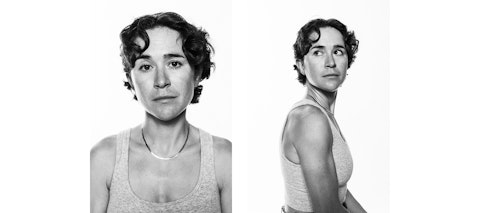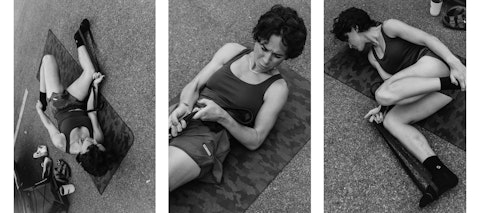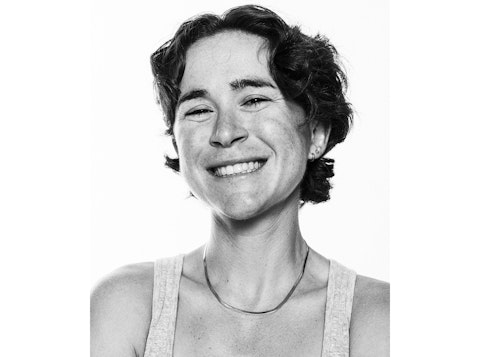
Molly Seidel — my way
“I don't love the word comeback because I think it feels like you're just reverting to your old form, and I think I am a very different person than I was. Sure, people can call it a comeback. I see it as like a progression in what I'm trying to do in my career.” — Molly Seidel
A quiet rise back to the surface of elite running. On her terms.
It’s a very modern dilemma. When you’re not racing, social media can feel like the only light still illuminating your world. An assumption that you should still be seen, or that you should be making effort to be seen. It takes boldness to flick that switch off as well. But it's this breathing space that allowed Molly to flex and adapt. “I kind of want people to forget about me for a little bit so that I have that opportunity to grow. It's like that's the only way to move forward. I just don't want to have to be my 25-year-old self the rest of my life. In the past, I pushed aside all the boundaries that I actually needed to be able to be separate.”

Experience makes an indelible impression only on the person who lived it. To everyone else it’s just a fleeting story. Swiped and forgotten. There’s self-preservation in acknowledging and then protecting that. To not be beholden to the voyeurism of social media — what’s mine is not also yours. Likes being the wrong type of validation. Everything shared is a little piece of self given away, so it’s important for Molly that she retains the essence of her identity and whatever she chooses to share is true to the person she is at that time. And this is important. The more that sharing becomes forced or feels like a performance, the more it reinforces the type of person that she is not. Trapped being what the crowd expects her to be. “There's this idea that I have to stay relevant. And it's like, ‘babe, no, you don't — it's fine.’”
“There is an inherent problem with how pro runners are expected to present ourselves on social media. That you have to be so tied to this identity of it — that our sponsors want that. I don't know. It becomes really hard to break out of that. I think even within my own racing, I find it hard not to get locked into that kind of paradigm of things.” Molly has always been one to buck the trend and be a unique force. Perhaps the freedom that she has found through trail running is a rebellion against the years of structure, routine, and monotony on the road. Better suited to this, even. Unshackled somewhat, Molly expresses a clarity for how she is looking to position herself.
“Everybody's figuring that out — the line between influencer and pro athlete. What are we expecting of our athletes here? And I want to be able to put my foot down and be like ‘no, I'm a pro athlete, I'm not an influencer. I don't care if I get paid less money for that.’”
It’s about releasing from the dichotomy of expectation in social media — to feel like you should put on a show without knowing if anyone really cares. In which case, who is any of it for?

Molly reflects on the internal battle to present externally as someone who has something interesting to show and tell. When you’re injured, and all you’ve got to talk about is the status of your injury, “it reinforces this identity that I am an injured runner, or I am someone who is injured.” It became a very negative place to be expressing herself from — a place that’s not sustainable. In the absence of physical exhaustion, it led to cumulative mental fatigue. And that’s not a road she is prepared to walk again.
Injuries and setbacks became almost cyclical. “Through the winter we just kept trying to build up for something. And it felt like this repeat of just building up for something and then falling apart. I kept trying to do everything the exact same way and expecting different results.” Her learning was entirely relatable, of trying to work back from a date in the calendar. The sensation of forcing the body to be ready is stressful and complex — easier to dwell on what isn’t going right than to celebrate the improvement. The discomfort of time accelerating toward a moment you might not be ready for.
“In our sport, we really want to treat our bodies as if they are machines that can just conform to the schedules that we put on them. But if we're being realistic, they're not. I don't think when I was younger I appreciated just how much stress it puts on your body to prepare really well for a marathon. It's hard on your body. It's hard on your brain.”

When injury forced Molly to the edge of the elite running bubble there was a new understanding that her world was a fragile microcosm — injury providing a fast-track from the center to the periphery. “I think it really sunk in for me just how small my life had become. All of my friends are pro runners, and it was really hard to realize then, when I couldn't run, that I just I didn't have a social network.” That sudden awareness that the sport wouldn’t always be there as a crutch created a sense of isolation. “I really, really made a concerted effort to try and expand my life out. Who am I outside the sport? Who are my friends that aren't necessarily runners? I want to be able to be having conversations that aren't just about running.” This moment that felt like drifting into no man’s land was also an opportunity to escape. In the corniest way — to broaden horizons and, literally, find new paths.

A change is as good as a rest. Molly didn’t stop running — she pivoted. Reduced volume and added some trail. Built robustness in a different way. Road running is formulaic, metronomic, and attritional. It can wear the body down and allow injury to build over time. You consult and diagnose problems. Trails are less calculated and injuries tend to happen acutely — a twist or a fall. You get answers immediately. In a way, it’s simpler. Molly is aware that her top-end intensity and pace that came from road training may have taken a back seat, but she’s in a better, healthier, place as a result.
“I don't love the word comeback because I think it feels like you're just reverting to your old form, and I think I am a very different person than I was. Sure, people can call it a comeback. I see it as like a progression in what I'm trying to do in my career.”

And now another start line looms — the New York City Marathon. Quietly Molly has been building. Infrequently sharing in Instagram and using Strava as required. It has been controlled, but fun to see how the strength of trails might translate onto the road. An unorthodox route, perhaps, but doing it your own way is always the best way. “I don't think of myself as an exceptionally emotional person, but I think I see this as a pretty significant thing. For me, just being able to get back to the start line after the last two years that I've had is really special.”


Words by Ross Lovell, Stills by Pierce Townsend.